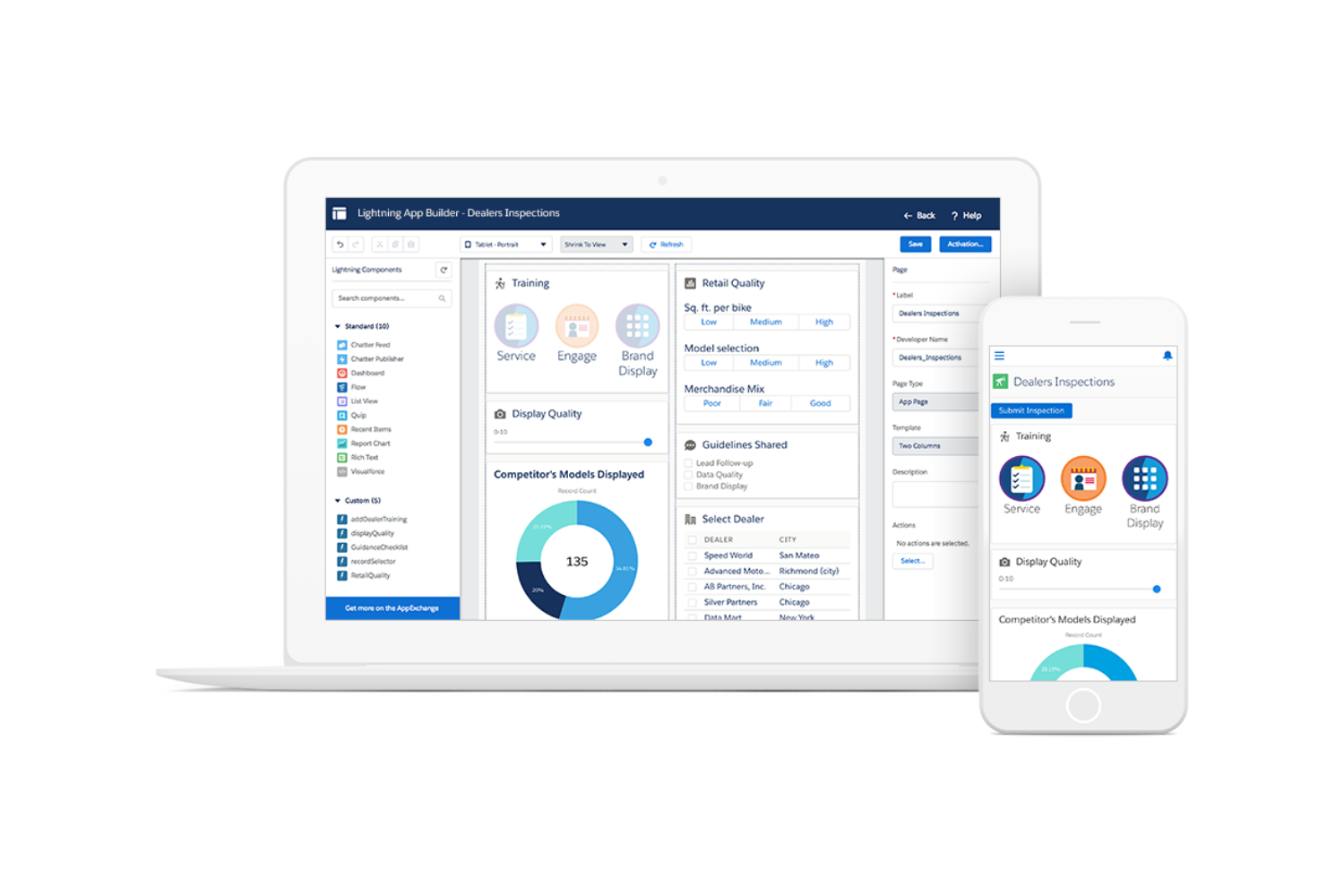Introduction
Welcome to the exciting world of Software as a Service (SaaS)! In today’s digital age, SaaS has become a dominant force in the software industry, revolutionizing the way businesses and individuals access and use software. Whether you’re a business owner, a marketer, or simply an avid user of online applications, understanding the key metrics in SaaS is crucial for success. And one such metric that often comes up is the MM in SaaS.
SaaS, as a software delivery model, offers several advantages over traditional software licensing. Instead of purchasing software upfront and installing it on individual devices, SaaS allows users to access software applications through the internet on a subscription basis. This not only eliminates the need for costly infrastructure and maintenance but also provides a more flexible and scalable solution.
Now, let’s dive deeper into what exactly the MM in SaaS refers to and why it is important in the world of software applications.
Definition of SaaS
Before we explore the significance of the MM in SaaS, let’s first clarify what SaaS actually means. SaaS, short for Software as a Service, is a software delivery model where applications are hosted and provided to users over the internet. In this model, users do not need to install or manage the software on their own devices. Instead, they can access the software through a web browser or a dedicated application.
SaaS operates on a subscription basis, where users pay a recurring fee to use the software. This subscription fee typically includes ongoing technical support and updates, eliminating the need for users to purchase a traditional software license or invest in server infrastructure. Popular examples of SaaS applications include customer relationship management (CRM) software, project management tools, and collaboration platforms.
The rise of SaaS has revolutionized the software industry, enabling businesses of all sizes to access powerful software applications without the high upfront costs and technical complexities. It has transformed the way businesses operate, collaborate, and scale, providing greater flexibility and efficiency.
One of the key benefits of SaaS for businesses is the ability to access software from anywhere, at any time, using any device with an internet connection. This level of accessibility allows teams to collaborate remotely and facilitates seamless communication and productivity. Additionally, SaaS applications offer automatic updates, ensuring that users always have access to the latest features and bug fixes without any manual intervention.
In summary, SaaS is a software delivery model that offers a flexible, cost-effective, and user-friendly solution for accessing and using software applications. It has gained immense popularity in recent years due to its numerous benefits, and understanding the key metrics in SaaS is vital for businesses to optimize their operations and maximize their success.
Understanding the MM in SaaS
When it comes to measuring the success and growth of a SaaS business, the MM (Monthly Metrics) is a crucial aspect to consider. MM refers to the monthly recurring revenue, which is the predictable and consistent revenue generated by a SaaS company from its subscription-based services on a monthly basis.
Measuring MM allows SaaS companies to gain insights into their financial performance and make informed decisions about their business strategies. By analyzing the MM, companies can understand their revenue trends, track customer acquisition and retention rates, and assess the overall health of their business.
MM is typically calculated by multiplying the number of active subscribers by the average revenue per user (ARPU). The resulting figure represents the revenue generated from subscription fees in a given month. By tracking the MM over time, companies can identify growth patterns, detect potential issues, and make adjustments to ensure long-term sustainability.
Furthermore, MM can be broken down into different components to provide a more comprehensive view of a SaaS business. For example, it can be analyzed by customer segments, pricing tiers, or geographic regions, allowing companies to identify which areas are driving growth and which areas require improvement.
Understanding the MM in SaaS involves monitoring key metrics that directly impact revenue, such as customer acquisition, churn rate, customer lifetime value (CLTV), and average revenue per user (ARPU). These metrics provide insights into customer behavior, product market fit, and the effectiveness of marketing and sales strategies.
By analyzing the MM and its associated metrics, SaaS companies can make data-driven decisions to optimize their pricing, marketing campaigns, customer retention efforts, and overall business performance. It helps them identify opportunities for upselling, cross-selling, and expanding their customer base.
In summary, the MM in SaaS refers to the monthly recurring revenue generated from subscription-based services. Understanding and analyzing the MM, along with other key metrics, empowers SaaS companies to make informed decisions, drive growth, and ensure the long-term success of their business.
What does MM mean?
MM is a common acronym used in the context of SaaS to refer to the Monthly Metrics. Specifically, MM stands for Monthly Recurring Revenue, which represents the predictable and consistent revenue generated by a SaaS company from its subscription-based services on a monthly basis.
MM is a fundamental metric in the SaaS industry as it provides valuable insights into a company’s financial performance and growth potential. It allows SaaS businesses to track and analyze their revenue trends, assess customer acquisition and retention rates, and evaluate the overall health of their business.
Calculating MM involves multiplying the number of active subscribers by the average revenue per user (ARPU). This approach provides a clear and quantifiable representation of the revenue generated from subscription fees within a given month. By monitoring and analyzing the MM over time, SaaS companies can identify patterns, spot any potential issues, and make data-driven adjustments to improve their financial stability.
Additionally, MM can be further segmented and analyzed by various factors, such as customer segments, pricing tiers, or geographic regions. This level of granularity allows companies to gain deeper insights into areas of strength and weakness within their business model.
Understanding and monitoring MM is essential for SaaS companies to make informed decisions about pricing strategies, marketing efforts, and customer retention initiatives. By ensuring that the MM is consistently growing, businesses can validate their product-market fit and drive sustainable growth.
Beyond revenue generation, MM also provides an opportunity for businesses to explore additional monetization strategies. By analyzing the breakdown of revenue by different cohorts, companies can identify opportunities for upselling and cross-selling to existing customers, effectively increasing their MM and overall profitability.
In summary, MM in the context of SaaS refers to the Monthly Recurring Revenue, which is a vital metric for understanding a SaaS company’s financial performance, growth potential, and overall business health. By tracking MM along with other key metrics, SaaS businesses can make informed decisions to optimize their operations and drive long-term success.
Why is MM important in SaaS?
The Monthly Metrics (MM), specifically the Monthly Recurring Revenue (MMR), plays a critical role in the success of SaaS companies. It provides valuable insights into the financial performance, growth potential, and overall health of a SaaS business. Here are some reasons why MM is important in the SaaS industry:
1. Financial Performance: MM allows SaaS companies to track their revenue trends on a monthly basis. By monitoring changes in MMR over time, businesses can identify periods of growth or decline and adjust their strategies accordingly. It helps companies assess the effectiveness of pricing models, promotions, and upselling techniques, ensuring that their revenue goals are met.
2. Predictable Revenue Stream: SaaS businesses rely on a recurring revenue model, where customers pay a monthly subscription fee. Tracking MM enables companies to have a clear understanding of their monthly revenue stream. With predictable revenue, businesses can plan and allocate resources more effectively, invest in product development, and make informed decisions about scaling their operations.
3. Customer Acquisition and Retention: MM provides insights into customer acquisition rates and customer churn. By analyzing MMR alongside customer metrics, businesses can evaluate their customer acquisition costs (CAC) and customer lifetime value (CLTV). This information helps companies assess the effectiveness of their marketing and sales efforts, optimize their customer acquisition strategies, and identify opportunities for improving customer retention.
4. Optimize Business Strategies: Tracking MM enables SaaS companies to evaluate the performance of different pricing plans, product features, and geographic markets. By analyzing MM on a segmented basis, businesses can identify specific areas that are driving growth or need improvement. This information allows companies to optimize their strategies, such as offering tailored pricing plans or expanding into new markets.
5. Investor Confidence: For SaaS companies seeking funding or partnerships, having a strong MM is crucial. Investors and potential partners value a predictable and growing revenue stream, as it demonstrates the company’s ability to generate consistent income. MM serves as a key performance indicator that helps build investor confidence, attract investment, and fuel further growth.
6. Business Valuation: When SaaS companies undergo a valuation process, MM is a key factor. A healthy and growing MM indicates a company’s potential for future profitability and scalability. Higher MMR translates into a higher valuation, making it an essential metric for business owners and stakeholders.
In summary, MM is important in SaaS because it provides a clear view of a company’s financial performance, helps track revenue trends, guides customer acquisition and retention efforts, optimizes business strategies, builds investor confidence, and impacts business valuation. By monitoring MM, SaaS companies can make data-driven decisions that drive growth and ensure long-term success.
Key Metrics in SaaS
In addition to the Monthly Metrics (MM), there are several other key metrics that are vital for evaluating the success and performance of SaaS companies. These metrics provide valuable insights into various aspects of the business, including revenue, customer acquisition, customer retention, and overall profitability. Here are some of the key metrics in SaaS:
1. Monthly Recurring Revenue (MRR): As discussed earlier, MRR represents the predictable and consistent revenue generated by a SaaS company from its subscription-based services on a monthly basis. It is a crucial metric for tracking revenue trends, evaluating the effectiveness of pricing models, and assessing business growth.
2. Churn: Churn refers to the rate at which customers discontinue their subscriptions or stop using a SaaS product. It is a critical metric that measures customer retention. By understanding churn rates, SaaS companies can identify factors that contribute to customer attrition and take necessary actions to mitigate churn, such as improving customer support or enhancing product features.
3. Customer Lifetime Value (CLTV): CLTV represents the total revenue a business can expect to generate from a single customer over their entire lifetime as a customer. It helps SaaS companies understand the long-term value of their customers and make informed decisions about customer acquisition costs, pricing strategies, and customer retention efforts.
4. Average Revenue Per User (ARPU): ARPU measures the average amount of revenue generated per user or customer. It provides insights into the financial health of a SaaS company, the effectiveness of upselling and cross-selling strategies, and the overall value customers derive from the product.
5. Customer Acquisition Cost (CAC): CAC represents the cost incurred to acquire a new customer. It includes marketing and sales expenses, as well as any other costs associated with acquiring new customers. By analyzing CAC, SaaS companies can evaluate the efficiency of their marketing and sales efforts, compare it to customer lifetime value, and make data-driven decisions for customer acquisition strategies.
6. Gross Margin: Gross margin measures the profitability of a SaaS company. It is calculated by subtracting the cost of delivering the product or service from the total revenue generated. Monitoring gross margin allows businesses to evaluate the effectiveness of cost management, pricing strategies, and overall profitability.
7. User Engagement: User engagement metrics, such as active users, sessions per user, and time spent in the application, provide insights into how customers interact with the SaaS product. Understanding user engagement helps businesses identify areas for improvement, assess product-market fit, and drive customer satisfaction and retention.
8. Customer Satisfaction and Net Promoter Score (NPS): Customer satisfaction and NPS measure the level of satisfaction and loyalty among customers. These metrics help SaaS companies understand customer sentiment and identify opportunities for enhancing the product, improving customer support, and driving customer advocacy.
By monitoring and analyzing these key metrics, SaaS companies can gain a comprehensive understanding of their business performance, identify areas of strength and weakness, and make data-driven decisions to optimize their operations, improve customer satisfaction, and drive sustainable growth.
Monthly Recurring Revenue (MRR)
Monthly Recurring Revenue (MRR) is a critical metric for SaaS companies as it provides valuable insights into their financial performance and growth potential. MRR represents the predictable and consistent revenue generated from subscription-based services on a monthly basis. This metric allows SaaS businesses to track their revenue trends and assess the overall health of their business.
Calculating MRR involves multiplying the number of active subscribers by the average revenue per user (ARPU). The resulting figure represents the revenue generated from subscription fees in a given month. By monitoring MRR over time, SaaS companies can identify growth patterns, detect potential issues, and make necessary adjustments to ensure long-term sustainability.
MRR provides a clear representation of the stability and predictability of the revenue stream. It allows businesses to have a better understanding of their cash flow, plan their budgeting and resource allocation, and make informed decisions about scaling their operations.
Monitoring MRR also provides insights into customer acquisition and retention rates. By analyzing changes in MRR alongside customer metrics, SaaS companies can evaluate the effectiveness of their marketing and sales efforts. They can identify the sources of revenue growth, assess customer churn rates, and make data-driven decisions to improve customer retention.
Breaking down MRR by customer segments, pricing tiers, or geographic regions provides further granularity and helps identify areas that are driving growth or need improvement. This segmentation allows businesses to optimize their strategies for different customer segments or markets, offering customized pricing plans or targeted marketing campaigns to maximize their revenue potential.
Another key benefit of MRR is its ability to reflect changes in pricing or customer behavior. SaaS companies can experiment with pricing adjustments, upselling or cross-selling strategies, or introducing new features to their subscription plans. Monitoring the impact on MRR provides valuable insights into the effectiveness of these initiatives and helps optimize pricing strategies for maximum revenue generation.
Investors and potential partners also value MRR as it demonstrates the financial performance and growth potential of a SaaS business. A healthy and growing MRR indicates a strong product-market fit and validates the company’s ability to generate consistent income. It builds investor confidence, attracts funding, and strengthens partnerships.
In summary, MRR is a fundamental metric in the SaaS industry that provides insights into the financial performance, growth potential, and customer acquisition/retention rates. By tracking and analyzing MRR, SaaS companies can make informed decisions to optimize pricing, marketing campaigns, customer retention efforts, and overall business performance. It is a crucial metric for driving long-term success and sustainability in the competitive SaaS landscape.
Churn
In the context of SaaS, churn refers to the rate at which customers discontinue their subscriptions or stop using a SaaS product. It is a critical metric that measures customer attrition and plays a significant role in assessing the health and growth potential of a SaaS business. Understanding churn allows companies to identify factors that contribute to customer churn and take necessary actions to mitigate it.
Calculating churn is relatively straightforward. It typically involves dividing the number of customers lost during a specific period by the total number of customers at the beginning of that period. The resulting percentage represents the churn rate.
Monitoring and analyzing churn is crucial for several reasons. Firstly, high churn rates negatively impact revenue and profitability. Losing customers not only means a loss of recurring revenue but also affects customer acquisition costs (CAC) and customer lifetime value (CLTV). Without addressing churn, a SaaS company may find it challenging to grow and sustain its business.
Churn analysis provides valuable insights into the reasons why customers discontinue their subscriptions. It helps identify patterns and trends that might indicate product or service issues, customer experience shortcomings, or lacking value propositions. Identifying the root causes of churn allows companies to implement necessary improvements, such as enhancing product features, addressing customer support concerns, or refining the onboarding process.
Preventing churn is often more cost-effective than acquiring new customers. By focusing on customer retention and reducing churn, SaaS businesses can allocate resources towards activities that drive growth and profitability rather than constantly having to invest in acquiring new customers. Moreover, satisfied and loyal customers may act as brand advocates, recommending the product to others and positively impacting customer acquisition efforts.
Churn analysis can also provide insights into customer segments that are more prone to churn. By segmenting the customer base and analyzing churn rates across different cohorts, businesses can identify patterns and implement targeted strategies to reduce churn within specific segments. This can involve personalized outreach, tailored retention offers, or product enhancements that cater to specific needs and pain points.
Furthermore, monitoring churn allows SaaS companies to track the effectiveness of their customer success initiatives. By understanding which actions and interventions positively impact churn rates, businesses can refine their customer success strategies, enhance customer onboarding processes, and improve the overall customer experience.
Investors and stakeholders also pay close attention to churn metrics when evaluating a SaaS business. Low churn rates signal a strong product-market fit, effective customer retention efforts, and a higher likelihood of long-term revenue growth. Demonstrating a low churn rate can contribute to attracting investment, partnerships, and ultimately, the company’s valuation.
Overall, churn is a crucial metric for SaaS companies to monitor and analyze. By understanding the reasons behind customer churn and implementing strategies to mitigate it, businesses can improve their customer retention rates, ensure sustainable revenue growth, and enhance the overall success of the company.
Customer Lifetime Value (CLTV)
Customer Lifetime Value (CLTV) is a significant metric for SaaS businesses as it measures the total revenue a company can expect to generate from a single customer over their entire lifetime as a customer. Understanding CLTV is crucial for evaluating the long-term value of customers and making informed decisions about customer acquisition costs, pricing strategies, and customer retention efforts.
To calculate CLTV, several factors need to be considered, including the average revenue per user (ARPU), the customer churn rate, and the length of the customer relationship. By multiplying these values together, a business can estimate the total value a customer brings to the company over their lifetime.
CLTV provides insights into the profitability and growth potential of a SaaS business. By knowing the approximate value of a customer over their lifetime, companies can make informed decisions about how much they are willing to spend to acquire new customers. This information helps optimize marketing budgets, set customer acquisition cost (CAC) targets, and establish appropriate pricing strategies.
Furthermore, CLTV allows businesses to focus on customer retention efforts. Acquiring new customers can be more costly than retaining existing ones. By assessing the lifetime value of customers, SaaS companies can allocate resources towards activities that enhance the customer experience, improve customer satisfaction, and reduce churn rates. This may involve providing personalized support, implementing loyalty programs, or offering upsell opportunities to increase CLTV.
CLTV also helps prioritize investment in customer success initiatives. Understanding the revenue potential of customers over their lifetime enables businesses to identify which customers are most valuable and focus efforts on nurturing those relationships. By providing ongoing value and ensuring customer satisfaction, businesses can increase CLTV and maximize revenue.
Segmenting CLTV analysis based on customer cohorts or demographics helps identify high-value customer segments. It allows businesses to tailor their marketing strategies and product offerings to meet the specific needs and preferences of these segments. By targeting high CLTV segments, companies can maximize revenue potential.
Moreover, CLTV serves as a valuable metric for business valuation purposes. A high CLTV indicates a loyal and engaged customer base, which is an attractive characteristic for investors. A robust CLTV metric can support business growth, attract investment, and increase the overall valuation of the company.
In summary, CLTV is a crucial metric for SaaS businesses as it represents the total revenue a company can expect to generate from a single customer over their entire lifetime. By understanding CLTV, businesses can optimize marketing budgets, set appropriate customer acquisition cost targets, prioritize customer retention efforts, and focus on high-value customer segments. CLTV also contributes to business valuation and can attract investment for further growth.
Average Revenue Per User (ARPU)
Average Revenue Per User (ARPU) is a key metric for SaaS businesses as it provides insights into the average amount of revenue generated per user or customer. ARPU is calculated by dividing the total revenue generated within a specific period by the number of active users or customers during that period. Understanding ARPU is crucial for evaluating the financial health of a SaaS company and optimizing revenue strategies.
ARPU allows SaaS businesses to assess the effectiveness of their pricing strategies. By analyzing ARPU, companies can determine if their current pricing models are generating sufficient revenue to support operations and drive profitability. It helps businesses strike the right balance between pricing their product competitively and maximizing revenue per user.
Tracking ARPU over time enables businesses to identify revenue trends and monitor the impact of pricing changes or product offerings. An increasing ARPU indicates that customers are spending more or upgrading to higher-priced plans, which can contribute to revenue growth without acquiring additional customers.
Segmenting ARPU analysis by customer cohorts, pricing tiers, or geographic regions provides additional insights and optimization opportunities. Companies can evaluate which customer segments or pricing plans contribute most to their overall ARPU and focus on strategies to upsell or cross-sell to increase revenue per user within those segments.
ARPU also helps SaaS companies evaluate the value their customers derive from the product. A low ARPU may indicate that customers are not fully utilizing the product’s features or are not perceiving its value. By analyzing ARPU alongside user engagement metrics, businesses can identify areas for improvement, enhance the product experience, and increase customer satisfaction, ultimately driving ARPU higher.
ARPU is also a useful metric for benchmarking against industry averages and competitors. Comparing ARPU with similar companies in the market provides insights into where a business stands in terms of revenue generation, helps identify areas for improvement, and highlights strategies for differentiation.
ARPU is closely related to customer acquisition cost (CAC) and customer lifetime value (CLTV) metrics. By comparing ARPU with CAC and CLTV, businesses can assess the profitability of acquiring new customers and ensure that the revenue generated from acquiring customers exceeds the cost of acquisition. It helps businesses optimize marketing budgets and make informed decisions about customer acquisition strategies.
Finally, ARPU is a metric that investors often scrutinize when evaluating a SaaS company. A high ARPU not only demonstrates a higher potential for revenue generation but also signifies a strong value proposition and customer willingness to pay. This can help attract investment, drive company valuation, and fuel further growth.
Overall, ARPU is a crucial metric for SaaS businesses to evaluate revenue generation, pricing strategies, customer satisfaction, and overall financial health. By monitoring and optimizing ARPU, companies can enhance revenue per user, drive profitability, and ensure long-term success in the competitive SaaS landscape.
Conclusion
The key metrics in the world of SaaS play a vital role in evaluating the success and performance of SaaS businesses. Understanding metrics such as Monthly Recurring Revenue (MRR), churn, Customer Lifetime Value (CLTV), and Average Revenue Per User (ARPU) provides valuable insights into the financial health, growth potential, and customer satisfaction of a SaaS company.
The Monthly Metrics (MM) provide a clear view of a company’s revenue trends and allow businesses to make informed decisions about pricing strategies, marketing efforts, and customer retention initiatives. MRR serves as a fundamental metric in the SaaS industry, reflecting the stability and predictability of the revenue stream.
Churn is another crucial metric that measures customer attrition. By analyzing churn rates, businesses can identify factors contributing to customer churn and take necessary steps to reduce churn, such as improving customer support and enhancing the product experience. Reducing churn leads to increased customer retention and long-term revenue growth.
Customer Lifetime Value (CLTV) provides insights into the long-term revenue potential of customers. Understanding CLTV helps optimize customer acquisition costs (CAC), pricing strategies, and customer retention efforts. By focusing on high CLTV segments and providing ongoing value to customers, businesses can maximize their revenue potential and drive sustainable growth.
Average Revenue Per User (ARPU) is a key metric for assessing revenue generation per customer. By monitoring changes in ARPU, businesses can evaluate the effectiveness of pricing models, identify revenue trends, and optimize revenue strategies. Segmenting ARPU analysis provides further insights into customer behavior and allows businesses to focus on high-value segments.
These metrics, while crucial individually, also interact with and depend on one another. By analyzing them collectively, SaaS businesses can gain a comprehensive understanding of their financial performance, customer acquisition and retention rates, and overall business health.
By continuously monitoring, analyzing, and optimizing these key metrics, SaaS companies can make data-driven decisions that drive growth, ensure customer satisfaction, and guarantee long-term success in an ever-evolving industry.

























